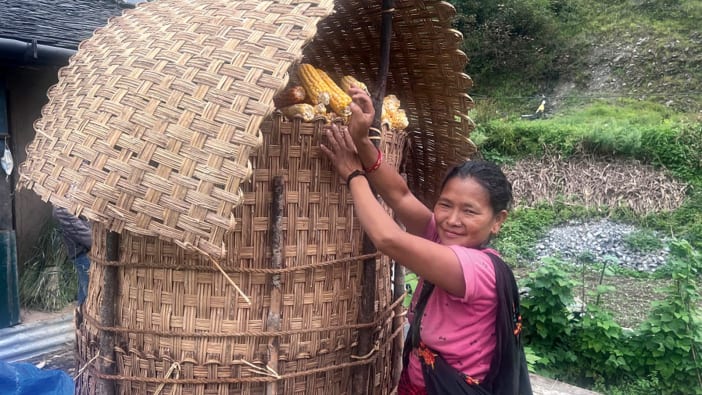by Mike Carter.
You have probably seen an ‘intensive’ poultry project: day-old chicks of a ‘grade’ or ‘hybrid’ type have been bought; an expensive poultry house has been built for them, perhaps with a corrugated tin roof; special feed is brought ready-mixed from mills.
Sometimes such poultry projects work well, but it is a sad fact that in many countries they can often be seen empty. The chickens are gone and money has been lost. The poultry may have belonged to a development project, to a village cooperative, to a church or school group or to an individual farmer. Whoever they belonged to, hopes have been disappointed.
Why do such projects so often fail? Intensive poultry-keeping is not the easy income-generating activity many people believe it to be. Advice may be given by people who know little about poultry-keeping. Sometimes people do not realise how much investment is needed. Things can go wrong. Amongst the most common problems are:
Poor management
The management in intensive poultry-keeping must be very good. There must be strict hygiene control: e.g. vaccination against disease, foot dips at the door, disinfecting the house for new chickens. There must be enough space for each bird and sufficient waterers, feeders, nest boxes and perches. If day-old chicks are bought, they must be kept warm and fed a correct diet.
Poor record-keeping
Production and money records are needed. Chickens not producing well (eggs or meat) must be culled (sold or killed) quickly.
Wrong type of chicken
The chickens may have come originally from another country. They may only be able to produce well in a very different type of housing, or under a different management system. Under village conditions, local chickens are often the most reliable and profitable.
Project started too large
Perhaps 200 layer chicks were bought before the skills and knowledge in intensive poultry-keeping were gained, or before it was certain the chicks would do well and the produce sell well.
Inaccurate budgeting
The farmer or project members need to work out accurately, before beginning, exactly how much food growing chickens eat. Other costs - medicines, vaccines, equipment - must be added. With layers it will be six months before the first eggs are laid; in the meantime there will be no income.
Feed supply problems
Perhaps feed supply or quality failed; there was no more cash to buy feed; there was no transport. Laying chickens will stop producing if feed quality changes or if they have to go without feed or water for just 24 hours. Chickens eat similar food to people, so if food is short, intensive poultry may be in competition with people. This inevitably will lead to supply problems.
Mike Carter works for T-CORD, Bishop Burton Agricultural College.

Articles
Problems with poultry
Intensive poultry-keeping is not the easy, income-generating activity many people believe it to be
1992 Available in English, French and Spanish

From: Small livestock – Footsteps 10
Improvements in small livestock can result in many health and financial benefits
Intensive poultry-production
Intensive poultry-production with improved ‘grade’ birds can be very successful and can make a lot of money. But the risks are very high indeed and the cost of failure may be huge. In many parts of the world, ordinary village poultry production involves chickens scavenging for their food. They usually have no special house, but sleep perhaps in a shed or cookhouse. Few eggs are laid, many young birds die, or are killed; growth is slow. But this system involves little financial risk to the farmer. The local chickens are well adapted to local conditions and more resistant to disease. Too often, people believe that there is little point in improving village poultry. But village poultry production can be greatly improved without much risk of failure.
My advice to anyone considering intensive poultry production under village conditions would be to improve village poultry production first. The results may surprise you! The centre pages contain some suggestions; please write and add your own.
Similarly Tagged Content
Share this resource
If you found this resource useful, please share it with others so they can benefit too.

Subscribe to Footsteps magazine
A free digital and print magazine for community development workers. Covering a diverse range of topics, it is published three times a year.
Sign up now - Subscribe to Footsteps magazine





